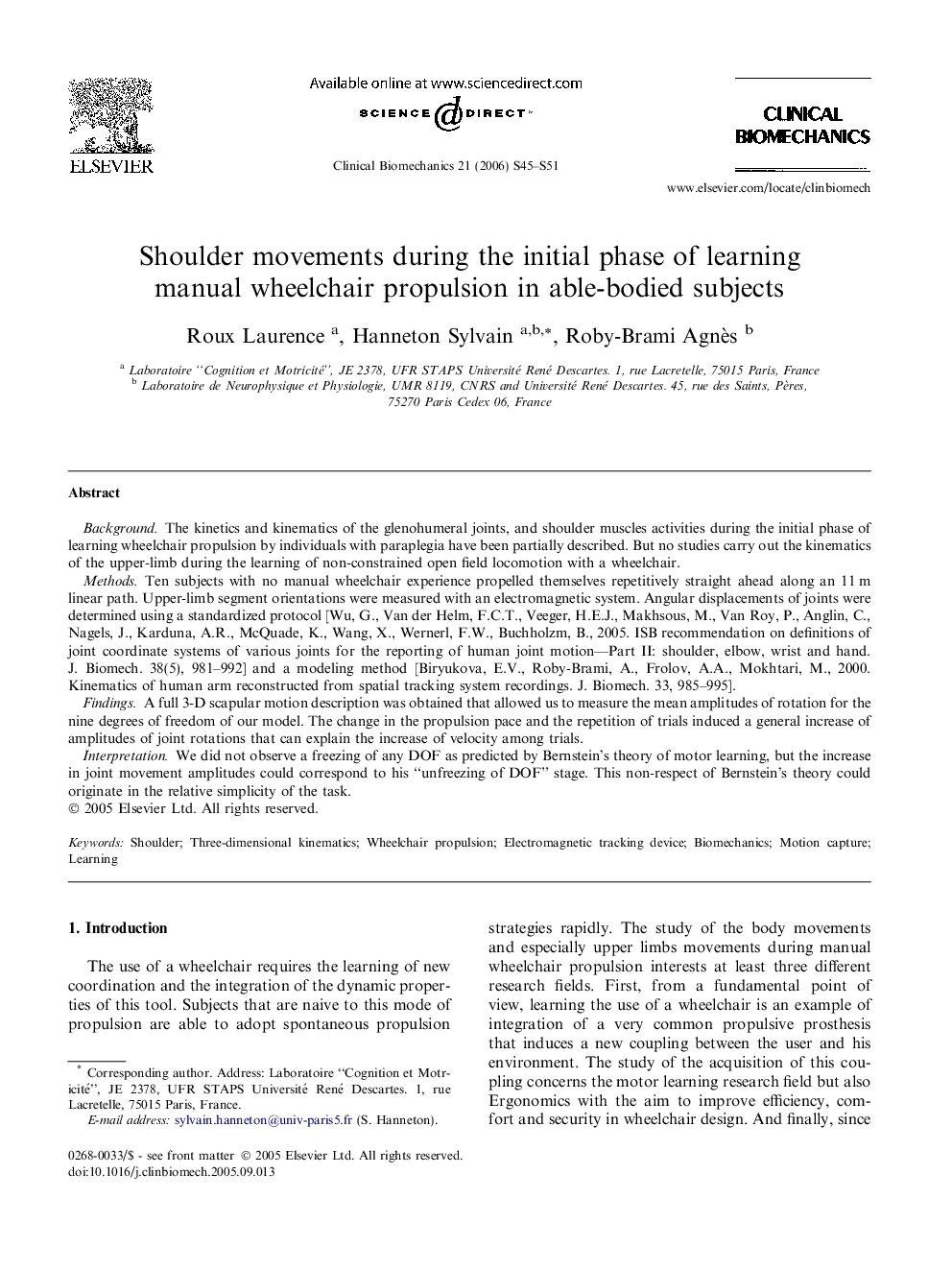| کد مقاله | کد نشریه | سال انتشار | مقاله انگلیسی | نسخه تمام متن |
|---|---|---|---|---|
| 4051621 | 1264999 | 2006 | 7 صفحه PDF | دانلود رایگان |

BackgroundThe kinetics and kinematics of the glenohumeral joints, and shoulder muscles activities during the initial phase of learning wheelchair propulsion by individuals with paraplegia have been partially described. But no studies carry out the kinematics of the upper-limb during the learning of non-constrained open field locomotion with a wheelchair.MethodsTen subjects with no manual wheelchair experience propelled themselves repetitively straight ahead along an 11 m linear path. Upper-limb segment orientations were measured with an electromagnetic system. Angular displacements of joints were determined using a standardized protocol [Wu, G., Van der Helm, F.C.T., Veeger, H.E.J., Makhsous, M., Van Roy, P., Anglin, C., Nagels, J., Karduna, A.R., McQuade, K., Wang, X., Wernerl, F.W., Buchholzm, B., 2005. ISB recommendation on definitions of joint coordinate systems of various joints for the reporting of human joint motion—Part II: shoulder, elbow, wrist and hand. J. Biomech. 38(5), 981–992] and a modeling method [Biryukova, E.V., Roby-Brami, A., Frolov, A.A., Mokhtari, M., 2000. Kinematics of human arm reconstructed from spatial tracking system recordings. J. Biomech. 33, 985–995].FindingsA full 3-D scapular motion description was obtained that allowed us to measure the mean amplitudes of rotation for the nine degrees of freedom of our model. The change in the propulsion pace and the repetition of trials induced a general increase of amplitudes of joint rotations that can explain the increase of velocity among trials.InterpretationWe did not observe a freezing of any DOF as predicted by Bernstein’s theory of motor learning, but the increase in joint movement amplitudes could correspond to his “unfreezing of DOF” stage. This non-respect of Bernstein’s theory could originate in the relative simplicity of the task.
Journal: Clinical Biomechanics - Volume 21, Supplement 1, 2006, Pages S45–S51